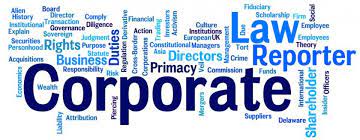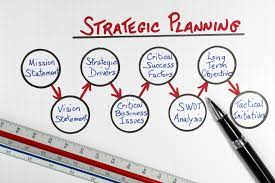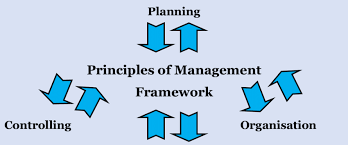Want help to write your Essay or Assignments? Click here
Using Leadership to Improve Ethical Performance
Regardless of the growing body of research in corporate ethics, scenarios of unethical practices are rampant in organizations. The essay attempts to assess leadership and ethical performance by interviewing a leader of organization ABC. Then the essay compares and contrasts the leaders’ perspective on leadership with my views.
Interview questions
- How would you describe ethical leadership?
- What is your take on ethical leadership and job performance?
- Describe your personal actions by which you convey to your staff that ethics/ethical? behavior is a high-priority for you and that you also expect it to be a high priority for your staff?
- Illustrate how your individual actions have affected your employees about the previous question?
- How would you describe your communication style?
Want help to write your Essay or Assignments? Click here
Summary of interview findings
Ethical Leadership
Moral leadership is a procedure whereby a person influences other peoples to realize a common objective. Individuals can become leaders in various ways including trait leadership, great event and process leadership theories. On trait theory, is a scenario where particular personality traits can lead individuals naturally into leadership. Great event theory involves a crisis or significant case that causes a person to rise and take up the leading role while leadership process theory involves learning leadership skills.
Ethical Leadership and Job Performance
Workers are valuable organizational assets, such that without them, corporate vision cannot be realized. Ethical leadership takes the center stage when it comes to mediating between organizational culture and worker outcomes. In any case, moral leadership can contribute to the efficiency of a leader, workers willingness to work extra hard, workforce job contentment and an environment for ethical leadership to succeed that eventually result in enhanced employee performance.
Personal action
The development of ethical leadership in an organization is a lengthy procedure, and ethical strategies are developed to prepare the staff with fundamentals for efficient management. Personally we focus on training our employees. Ethics in an organization applies to all employees irrespective of their position. Thus, we have implemented a mechanism for ensuring that all personnel helps in the sustainable survival of the operations.
The action is centered on developing workers with ethical competence, role models and empowering others to ensure organizational goals are achieved. Nonetheless, training programs must concentrate on personal reflection directed by concepts that improve the relevance of ethical values as well as management insights.
Want help to write your Essay or Assignments? Click here
Effects of personal actions on employees and colleagues
Individual actions have been an eye opener from senior executives to formulate shared dialogue and conception concerning the way in which ethical leadership can be executed. This has acted as a platform for the management to understand the need for “challenge meeting” regular procedure that allow every employee to the organization to give views whether the organizations leaves up to its values or not.
Communication style
Communication is the basis of increasing performance of the organization. The communication style is centered on promoting the association employees develop in their workstations with colleagues and senior managers demonstrate workers roles and performance.
Analysis: comparison
Much as my interview believes that people can become leaders through trait leadership, great event and process leadership theories, I think leadership can be transformational or transactional. Transformational headship involves developing a vision that aims at informing as well as an expression the firm’s mission and presents the basis for organizational strategies, guidelines, and procedures.
Transformational leadership employs strategies and approaches to empower others, increase their self-reliance and change their practices, attitudes that are consistent with the leader’s objectives. Additional transformation leaders use inspirational stimulation, individualized reflection, idealized authority and psychological motivation to meet organizational goals efficiently.
I support my interviewee’s views regarding ethical leadership and employee performance. Nevertheless, I firmly believe that moral leadership is linked to positive impacts on the performance of workers, motivation, and their readiness to report issues. Moreover, moral leaders are likely to influence “task importance” and “independence” of employee readiness to work hard to ensure objective is realized.
If workers perceive senior executive’s good morals, ethics can be seen as a crucial aspect of the organization. This can be converted into appreciating of senior executives by workers. While information from the interview show that ethical leadership is responsible for mediating between organizational culture and worker outcomes, trust and commitment are important parameters for increasing workers performance (Piccolo et al., 2010).
Want help to write your Essay or Assignments? Click here
Much as training is an important strategy for ensuring that employees prioritize ethics/ethical behavior; it is necessary to recognize the importance of ethical leadership; ways in which the company benefits its shareholders and values. It is also essential to invest time in raising concerns regarding the impacts of ethical behavior on primary shareholders, or the organization’s values as well as morals. Like the interview findings, the organization has actions for developing ethical behaviors among employees. However, these measures should be reinforced by integrating ethical leadership. It’s not essential to utilize specific principles, although the organization can involve employees in a manner that it considers moral.
The effects of personal actions have provided new insights into management; it’s of great importance to recognize that familiarity of both leadership and ethics presents a theoretical structure for comprehending the practice of ethics particularly when leading. Furthermore, they offer opportunities for exercising leadership responsibilities in cases that call for shared action whereby the learner has certain duties for results that are important to others.
In any case, it’s essential to reinforce personal ethics that integrates fundamental values like loyalty and integrity. The developed of actions that prioritize ethical behavior the codes should be clear and implementation of appropriate guidelines to make sure that employees recognize their roles and expectations. Additionally, an organization should exhibit moral leadership during selection and recruitment procedure; training while giving incentives to workers that embrace ethical behaviors.
Based on research outcomes, I agree that communication style can increase organizational performance. On the other hand leader’s communication style can adversely affect the organization’s operations. This is because effective communication is largely reliant on leadership qualities, which enable open communication between workers and management. Nevertheless, effective communication style that fosters worker output is challenging (Pirraglia 2012). Communication style of the organization is affected by leadership approach.
Want help to write your Essay or Assignments? Click here
By and large, ethical issue is an overall concept; especially in organizations as such leaders should take necessary measures. Ethical managers are considered as people with a wide ethical understanding and concern for stakeholders. For that reason, they should create ethically conducive workplace for workers, convey ethical aspects, act as role models and implement strategies for developing qualified workers.
Leaders that demonstrate ethical behavior put into consideration not only the needs but also workers rights and fair treatment. Without a doubt, each worker prefers working with a truly and responsible organization. Therefore, senior managers have to meet ethical issue commitments.
References
Pirraglia, W 2012; The Effects of leadership styles on the Organization Retrieved from http://smallbusiness.chron.com/effects-leadership-styles-organization-10387.html
Piccolo, R.F., Greenbaum, R., Den Hartog, D.N. & Folger, R. (2010) „The Relationship between Ethical Leadership and Core Job Characteristics‟, Journal of Organizational Behavior, Vol.31, pp.259–278
Want help to write your Essay or Assignments? Click here









